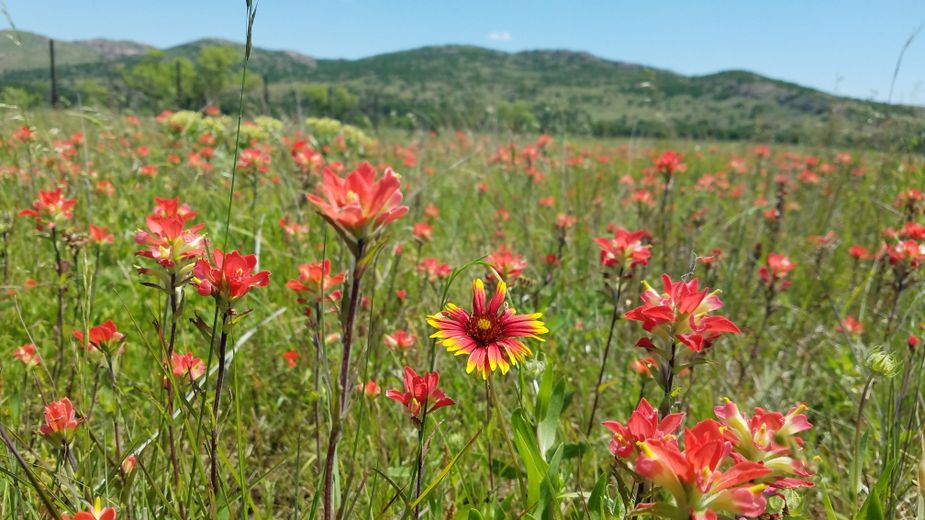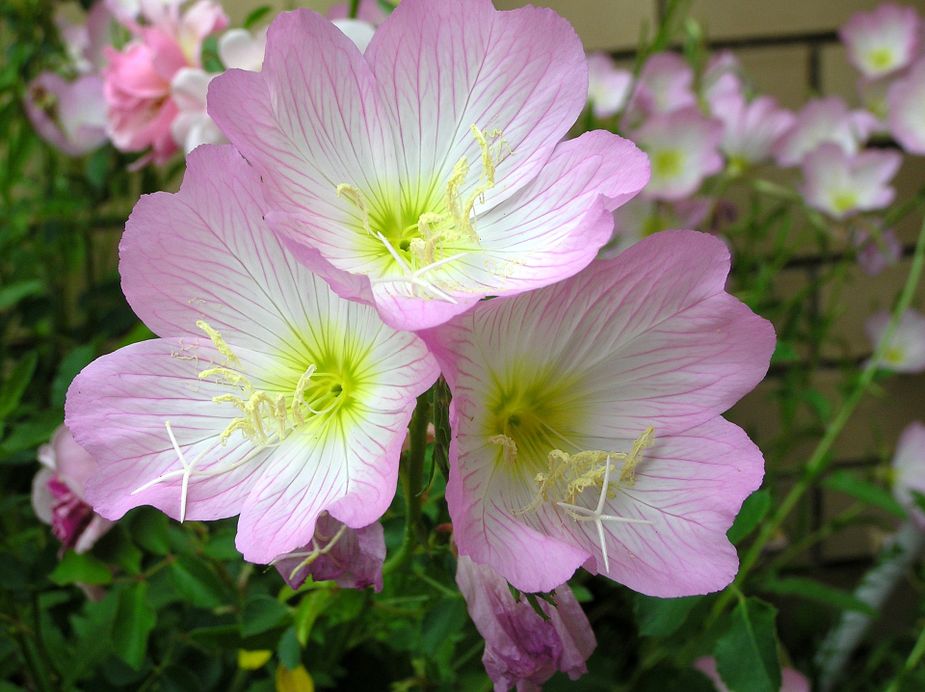OK Bloomer
Published April 2021
By Megan Rossman | 6 min read
Spring, my second favorite season, is officially here. My hyacinths marked the occasion by springing up to join my invincible oregano, their vivid indigo buds nestled among piles of crunchy brown leaves and other wind-swept debris that have blanketed my little garden all winter. They’re my annual call to outdoor action. Now is the time for me to stop thinking about cleaning up that mess of decaying organic matter and actually do it.
It can be a challenge to grow things in my soil. In spite of my best efforts, it doesn’t take kindly to strangers. It prefers the familiar company of weeds. Oklahoma’s scorching summers also are less than nurturing for many species I introduce. I’ve spent some time this spring looking for plants that grow well here, and I came across a great resource from the always-helpful OSU Extension Office. Oklahoma Proven: Plant Selections for Oklahoma 1999 – 2020 outlines a variety of plants hand-picked for Oklahoma gardeners. It’s available as a PDF download or you can order a physical copy for $15.
Below are a few of my own horticultural best bets for 2021.

Indian Blanket surrounded by Indian Paintbrush. Photo by Megan Rossman
Indian Blanket, also known as blanket flower, was chosen in 1986 to be the state wildflower for good reason: It tolerates heat and arid soil, so it will grow just about anywhere in Oklahoma. It’s best to plant these brilliantly multi-hued flowers in early spring or late fall so that they’ll bloom in May and continue to rebloom throughout the summer. If you want to see them in all their natural glory, take a trip to the Wichita Mountains National Wildlife Refuge in late spring where they cover meadows as far as the eye can see.

Trumpet vine. Photo by Hans Braxmeier
Every spring, the trumpet vine covering the front of my house bursts from its slumber and every insect within a five-mile radius heeds its call. This is a mixed blessing. The tubular burnt orange flowers are lovely to look at, but if you have issues with ants and other home-invading insects, this will not help. I watch with dread as black ants swarm all over their hardy, tentacle-like tendrils, knowing the final destination of these tiny minions is my kitchen. One bonus of my trumpet vine is visits from green hummingbirds, which momentarily frighten me when I mistake them for huge bees.

Evening primrose. Photo by Beverly Buckley
One year I threw handfuls of wildflower seeds in my backyard and hoped for the best. In the years that have followed, I’ve seen all sorts of blooms appear as the weather warms. Evening primrose has been one of my favorites. There are dozens of varieties in many colors, but the ones that come up every year at my house have four big white petals streaked with veins of pink. Birds like to eat their seeds and bees and hawkmoths also are partial to these showy flowers. Since they grow in my awful backyard, they’re obviously tolerant of poor soil and drought, but I hear they really thrive in well-tended garden soils with plenty of sun.

Milkweed. Photo courtesy Pixabay
Given its name, it’s no surprise milkweed has a tendency to grow like, well, a weed. Fortunately, it’s one that you actually want in your garden. This perennial sprouts blazing orange, yellow, or pink clusters of blossoms that pollinators love, particularly Monarch butterflies whose numbers peak in early autumn as they make their way through the state on their way down to Mexico. This drought-resistant species loves sun and grows best in well-drained soil.

Purple coneflower. Photo by Brian Martin
Also known by their scientific name echinacea purpurea, purple coneflowers are nectar jackpots for pollinators. They favor sun and bad soil, which is great news for those of us that enjoy gardening but are a bit lazy about it. You may recognize the scientific name from your local health food store, as these plants are not only magnificent but also beneficial to human health. People use the flowers to make teas and supplements that are said to boost the immune system.
"Weekly Events Calendar April 5-11, 2021"
"Weekly Events Calendar April 12-18, 2021"
You May Like
Weekly Events Calendar: July 7-13, 2025
This week in Oklahoma: Go cosplay crazy in Tulsa; the Gatlin Brothers perform in Durant; and celebrate Woody Guthrie in Okemah.
This week in Oklahoma: Go cosplay crazy in Tulsa; the Gatlin Brothers perform in Durant; and celebrate Woody Guthrie in Okemah.
Oklahoma Today Podcast: June 30, 2025
OKC! OKC! OKC! The Thunder won it all, folks! This week's special episode is presented from the teams NBA Championship Parade from downto...
OKC! OKC! OKC! The Thunder won it all, folks! This week's special episode is presented from the teams NBA Championship Parade from downtown Oklahoma City.
A Pink Paradise
Any book store is a good time, but this one's got a specialty soda bar.
Any book store is a good time, but this one's got a specialty soda bar.










